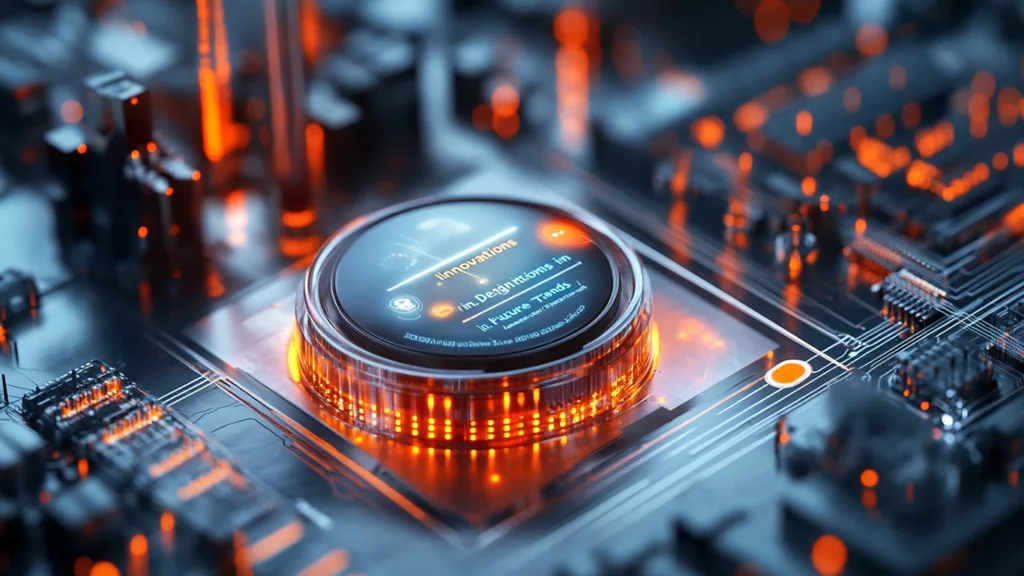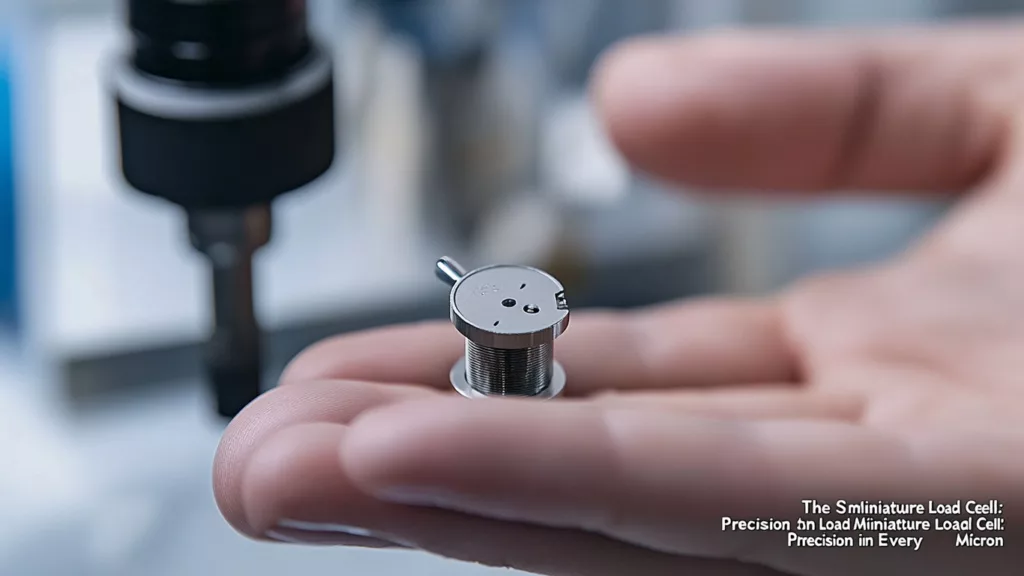Introduction to Miniature Load Cells
The world of precision measurement has undergone a quiet but powerful revolution, driven by technological advances in sensor miniaturization. Among these, the smallest miniature load cell has emerged as a transformative component in various industries—delivering accurate force measurement in the tiniest of spaces. With increasing demand for high-performance sensors that don’t compromise on size, these tiny marvels are making big impacts.

Definition and Functionality
A miniature load cell is a compact transducer that converts force into an electrical signal. It operates on the same fundamental principle as larger load cells—usually based on strain gauge technology—but is engineered to perform within ultra-compact dimensions. Despite its small size, it offers high sensitivity and exceptional precision, often in gram-level force measurement ranges.
Miniature load cells are typically categorized based on their form factor: button, S-beam, pancake, and through-hole types. Each serves a specific function and suits particular applications where conventional load cells would be too bulky or invasive.
Importance in Precision Measurement
Precision is the beating heart of modern engineering, and nowhere is this more vital than in industries where micromovements and minute force variations matter. The smallest miniature load cells enable accurate force measurement where space is limited—such as in micro-robotics, delicate surgical instruments, or aerospace testing rigs.
By embedding these sensors into ultra-small assemblies, engineers can achieve closed-loop control, real-time diagnostics, and condition monitoring with confidence. This leads to increased safety, improved product performance, and reduced operational risks.
Characteristics of the Smallest Miniature Load Cell
Dimensions and Weight
The smallest miniature load cells can measure as little as 3mm to 10mm in diameter and weigh under 10 grams. These physical characteristics allow them to fit into confined spaces without disturbing the mechanics of the host system. Their low profile design is ideal for integration into compact environments like miniature actuators, grippers, and wearable medical devices.
For instance, ultra-miniature button-type load cells often come with diameters as small as a coin and are built to measure forces in the range of 10g to 500N.
Accuracy and Sensitivity
Don’t let the size fool you—these sensors boast remarkably high accuracy, often within ±0.1% of full scale. Sensitivity is typically expressed in millivolts per volt (mV/V), and many of these sensors achieve sensitivities around 1.0 to 2.0 mV/V, providing responsive and linear outputs even under low-load conditions.
Their performance is further enhanced by temperature compensation mechanisms and overload protection features, ensuring reliability even in fluctuating environments.
Material and Build Quality
The durability and performance of these load cells stem from high-grade materials like stainless steel or aerospace-grade aluminum. These materials provide robust resistance to corrosion, high stress, and vibration. Their rugged design ensures stability and longevity, even under frequent dynamic loading.
Precision machining and laser welding techniques are used during fabrication to maintain tolerances within microns, which is critical for accurate readings in small-scale systems.
Applications of Miniature Load Cells
Industrial Automation
In the realm of industrial automation, the smallest miniature load cell is often embedded into robotic arms, press machines, or conveyor systems to measure tension, compression, or torque. Their compact size allows seamless integration into end-of-arm tooling, ensuring quality control without altering the production setup.
They’re essential in applications like force feedback for robotic grippers, assembly press force monitoring, and material testing.
Aerospace and Defense
Weight, space, and reliability are crucial in aerospace and defense industries. These tiny sensors are widely used in wind tunnel testing, flight control actuator systems, and UAV force monitoring. Their small footprint and ability to withstand extreme temperatures make them ideal for applications where space and performance are non-negotiable.
They help collect real-time data on structural loads, which enhances the design and safety of aircraft and satellites.
Medical Devices
The medical field demands ultra-precise instruments that are both reliable and minimally invasive. Miniature load cells find extensive application in surgical robots, infusion pumps, prosthetic devices, and diagnostic tools. They provide real-time force feedback during surgical procedures and enable controlled dosing in automated drug delivery systems.
Additionally, these sensors support rehabilitation technologies by monitoring patient interaction with therapy devices.
Benefits of Using the Smallest Miniature Load Cell
Space-Saving Design
One of the biggest benefits of the smallest miniature load cell is its compact size. In designs where space is a luxury, integrating standard-sized load cells would be impossible or inefficient. Miniature sensors allow engineers to maintain sleek product profiles without compromising measurement capabilities.
Their non-intrusive nature also means minimal interference with mechanical movements, enhancing system ergonomics and functionality.
Enhanced Measurement Capabilities
Despite their size, miniature load cells offer high resolution, fast response times, and low noise outputs. They support dynamic force measurements and offer stable signals even under complex loading scenarios. Their compatibility with modern signal conditioners and amplifiers enhances their integration into digital control systems.
This accuracy is critical in applications that require real-time force monitoring and feedback loops, such as robotic surgery or micro-assembly lines.
Cost-Effectiveness
Miniature load cells reduce overall system cost by lowering the need for bulky hardware, reducing material use, and minimizing installation efforts. Their ability to enhance process control leads to fewer product defects, reduced downtime, and improved yield—translating into long-term savings.
Moreover, their durability and maintenance-free design lower the cost of ownership over the lifecycle of the equipment.
Comparative Analysis with Standard Load Cells
Size and Weight Comparison
Standard load cells often measure over 50mm in diameter and weigh hundreds of grams. In contrast, the smallest miniature load cells are 80–90% smaller and lighter. This distinction makes them indispensable for space-constrained applications, especially in modern automation and wearable technology.
Performance Metrics
While larger load cells typically handle higher loads, miniature load cells are optimized for smaller force ranges. However, their accuracy and sensitivity rival, and in some cases exceed, that of standard models. Their ability to measure micro-loads with precision offers significant advantages in niche applications.
Application Suitability
Standard load cells excel in structural monitoring, heavy machinery, and bulk material testing. Miniature load cells, however, dominate in micro-environments like semiconductor manufacturing, lab testing, and surgical devices. Choosing between them depends on load range, space constraints, and the need for portability or embedded use.
Future Trends in Miniature Load Cell Technology
Innovations in Design
Manufacturers are now exploring hybrid designs that combine multiple sensing technologies—optical, piezoelectric, capacitive—into one compact form. There’s also a trend toward modular designs that can be customized based on the shape and load requirements of the target system.
These innovations are driving the emergence of smarter, self-diagnosing sensors with built-in data processing capabilities.
Advancements in Material Science
The use of advanced composite materials, graphene coatings, and nanostructures is enhancing the strength-to-weight ratio of miniature sensors. These materials offer better resistance to fatigue, thermal drift, and chemical corrosion, which significantly extends their operational lifespan in harsh conditions.
Market Growth and Demand
The global market for miniature load cells is projected to grow steadily, fueled by rising demand in robotics, healthcare, and electronics. As industries embrace automation and AI-driven analytics, the need for real-time, miniature force sensing will only escalate.
Emerging applications in consumer electronics—such as force-sensing touchscreens and pressure-sensitive wearables—will further widen their market reach.
Conclusion
Recap of Key Points
The smallest miniature load cell may be tiny, but its impact is monumental. From aerospace to healthcare, these sensors empower engineers and designers to build smarter, more efficient systems. Their accuracy, compactness, and reliability make them a cornerstone of modern engineering.
We’ve explored their characteristics, applications, benefits, and how they stack up against traditional load cells. We also peeked into the future, where these sensors will play an even greater role.
Final Thoughts on Miniature Load Cells
The world is only getting smaller—and so are the tools we need to measure it. As industries push the limits of miniaturization, the smallest miniature load cell will continue to be a silent enabler of innovation. Whether you’re building the next surgical robot or a high-speed drone, these sensors are key to unlocking next-generation performance.
FAQs
What is the smallest miniature load cell available?
How accurate are miniature load cells?
Can the smallest miniature load cell be used in harsh environments?
What industries use miniature load cells the most?
How are miniature load cells calibrated?
Are miniature load cells expensive?
Clear Call-to-Action (CTA):
XJCSENSOR is a sensor manufacturer, providing customized wholesale sensor business. Our products are widely used in industrial automation, robotics, automotive, 3C electronic automation, packaging automation, agricultural machinery, medical equipment, and other industries.
🔧 Looking to integrate the smallest miniature load cell into your next project?
📞 Contact us today for expert guidance and custom solutions!
📩 Subscribe to our newsletter for the latest in sensor technology.
🌐 Explore our range of precision sensors at XJCSENSOR.com
📱 Follow us on social media for innovations, case studies, and product demos.


